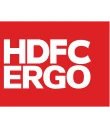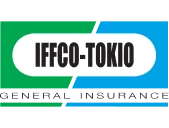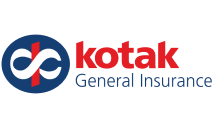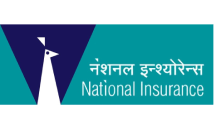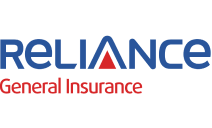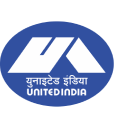Comprehensive car insurance
In today’ times of high vehicle density, the likelihood of a mishap too increases significantly. In such a scenario, having a car insurance is important. It will help to protect yourself from heavy repair bills in the unfortunate case of an accident, man-made, or natural disaster. While the legal mandate is to have a third-party coverage as the bare minimum, it will be a smart idea to opt for comprehensive coverage. In third-party insurance, the coverage is only for damages to third-party property or injury to the other person involved with you in an accident. This means that for repairs to damage to your own car, you would have to foot the bill.
However, with a comprehensive car insurance policy, you get better level of protection. You are covered not only for third-party damage, but also for own damage. Additionally, other calamities (both natural and man-made) like theft, fire, road accidents and natural disasters too get covered under a comp insurance, but not in a third-party insurance. This way, a comprehensive car insurance policy is the best package to provide all-round protection to your vehicle.
What are the features of a comprehensive car insurance policy?
Given below is a list of 4 chief features of a comprehensive car insurance policy. Let’s have a look.
- Suppose you do not have comprehensive insurance, you need to pay for all the damages incurred by your car in an accident. Furthermore, if your car gets stolen, you will not obtain any compensation from your insurance provider.
- Generally, car owners receive complete peace of mind by getting insurance for their cars. This is because they stay rest assured that they do not need to pay for the damages or costly repairs sustained by and on their car. They simply need to pay for mandatory deductibles and voluntary excess at times of claim settlement.
- If your car is safe under the Comprehensive insurance policy, you can opt for claims from your vehicle insurance provider for accidents and liabilities that occur because of your mistake.
- The car owner gets comprehensive coverage at times when the cause of the accident may be man-made or natural.
Why go for comprehensive car insurance
Opting for a comprehensive car insurance offers advantages at multiple levels. Check out why going for this type of policy provides maximum value for money for your car.
- Better coverage
Imagine if your car steering wheel gets jammed and you ram it into Mr. Desai’s shop shutter. Now when the repairs are carried out to the shop and to your car, you get a bill of Rs. 2,650/- for the shop repairs and Rs. 4,500/- for fixing your car’s bumper.
If you were carrying a third-party insurance, you would be covered only for Rs. 2,650 (third party property damage) and would have had to bear the Rs. 4,500 for repairs to your own car. With comprehensive insurance, you are protected from both ends for both repair bills. - Offers more value for money
You may think that third-party insurance which carries a lower premium will be a better buy for you. However, keep in mind that the premium on that type of policy is low because the risk carried by the insurance company is also low. For comprehensive policy, while the premium is high, the degree of protection you get is also high, which makes it a value for money deal for you. - Remain stress free
In a tough scenario, third-party insurance policyholders may have to deal with the intense stress of arranging for funds not only for own car damage, but also for the injury sustained in the accident. However, if you are a comprehensive insurance policyholder, then you can be stress-free as it covers damages to car or injury to the owner driver, as well as, repairs to the third-party car or the hospitalization of third-party driver.
Compare and save upto 70% on car insurance without inspection or paperwork with Turtlemint
What is covered by comprehensive car insurance?
- Damage to own car and third-party loss
- Personal accident cover
- Damage due to natural calamities
- Damage due to man-made hazards
- Car theft
Compare and save upto 70% on car insurance without inspection or paperwork with Turtlemint
What it does not cover?
- Mechanical breakdown or electrical issues during traveling
- Routine wear and tear due to kilometers clocked or due to the age of the car
- Damage due to driving under influence of alcohol or drugs
- Consequential loss which results from a certain action of the driver. A common example is the hydrostatic loss suffered by the engine by wrongly starting the car in a water logged area
- Driver doesn’t have valid driving license
- It doesn’t cover contractual liability. For instance, if the car is kept as a collateral for a loan and the lender uses the car when the contract is in force, and meets with an accident, then repairs for such accidents will not be covered
Who should buy comprehensive car insurance?
Though all car-owners must invest in a comprehensive policy, If you are doubting whether a comprehensive car insurance plan is suitable for you or not, here is a list of people who must consider the insurance plan.
- New Car Owner: This is to ensure that their new and major investment is protected at all costs.
- Road Tripper: In case you are a traveller and move around places with your car, you should get a comprehensive car policy to protect your car from all/any emergencies. In addition, you can go for the Roadside Assistance add-on as well.
- Fancy Car Owners: Holding immense investment, fancy cars often get stolen or broken. The repairing costs involved are unbearable. Hence, a BMW/Mercedes owner must get a comprehensive cover to secure their possession from theft/damage.
- Overprotective Car Owners: If you get affected by a tiny scratch on your car, get you a comprehensive plan. It will cover all kinds of damages besides giving you complete peace of mind.
- Metropolitan City Resident: Ensure opting for the Comprehensive plan if you are resigning in a metropolitan city. This will protect your investment from all risks including traffic, accidents, pollution.
Why comprehensive car insurance is better than third-party coverage?
If you are thinking that cheap coverage is better, then think again. While a third-party insurance will protect you from being fined by a policeman at a traffic signal, it won’t protect you when you would need it the most – i.e. right after an accident has caused severe damage to your car. See why comprehensive policy provides far better value than third-party coverage:
- Protection is expanded to owner-driver too
If as a comp policyholder, an accident has caused damage to your car or caused injury to you, then you will get protection for repairs as well as hospitalization bills. Under third-party coverage, you would have had to pay for these from your own pocket, causing higher stress levels along with the financial loss. - Better value for money
If we look at the amount of value it provides during recovery from an accident or to get the car repaired, this type of policy is more economical and provides better value for money than a third-party insurance policy - Add-ons available enhance the degree of protection
With a third-party cover you cannot buy add-ons. But with a comprehensive policy, you can significantly extend the level of protection for your car with handy add-ons like zero depreciation, NCB protect, and engine protect.
Buy third party car insurance in under 5 minutes with Turlemint with ease
What add-ons are available under comprehensive cover?
Picking the right set of add-ons give you maximum value for money. Some of the more popular add-ons preferred by car owners include:
- Zero Dep
Zero Depreciation or Zero Dep protects you from deductions arising from depreciation associated with the car. So if your car repair bill factored in Rs. 1,500 for rubber, nylon, and plastic parts, the claim payout for a standard policy will exclude this amount from the claims payout. However, for a comp policy strengthened by a zero dep add-on, the claim will factor in this amount too, so that you won’t have to bear the costs. - NCB protect
With NCB you are rewarded for not raising a claim in the entire year and are offered a discount on the next year’s premium. This might go as high as 50% for the 5th continuous year of no claims raised. Now, if suppose, you have to raise a claim in the 4th year, you may lose all the accumulated NCB discounts in the next year. Some insurance companies offer an NCB protection add-on that keeps your NCB applicable even if you have raised a claim in the year. It comes with a few conditions as below:
- only 1 claim allowed in a year
- claim should be on Own Damage only
- Consumables
Consumables like nuts, bolts, and screw washers (parts which have a limited or specific usage) are usually excluded from coverage in a car insurance. However, when you opt for consumables add-on, you ensure that these parts are covered in the claim paid out by the insurance company. This is generally limited to vehicles that are less than 5 years old. - Engine protect
If you need to keep vital engine parts like pistons and crankshaft protected from issues like oil leakages or water ingress, then it makes sense to go for an engine protect add-on. If you are living in a locality where the likelihood of flood is high, then this is an essential add on to go for.
Why should you upgrade to comprehensive car insurance?
To answer this question, let’s compare a comprehensive car insurance policy with a third-party car insurance policy. Most car owners make the mistake of buying third-party insurance just because of its cost-effectiveness. They must be aware of the fact that they might have to bear huge expenses in case of repairs, minor accidents, own car damage, etc. This is exactly where a comprehensive car insurance policy enters the play.
Though comprehensive policy might be a little costlier, there are a number of factors that overpower the cost of Comprehensive Car Insurance Policy. Simply put, you must upgrade to a comprehensive insurance policy because
- Despite being expensive, the intensity of damages that comprehensive plans cover makes it a better option and value for money. While the elementary third-party cover covers only the damages you cause to a third party, a comprehensive policy has a much wider scope.
- Contrary to the third-party cover, a comprehensive insurance plan covers own damages right from natural calamities, theft, fire, accidents, etc. It provides a shield to your car in a wide range of situations.
- You can enhance your coverage with a comprehensive car insurance plan. This is because comprehensive policies come inclusive of extended add-ons and covers. All you need to do is to pay a little more premium and achieve as many add-ons as you require.
What are the benefits of purchasing comprehensive car insurance?
Listed below is a brief section discussing the benefits of purchasing comprehensive car insurance.
- Covers Own Damage: In cases where the owner meets a mishap, the Comprehensive policy covers all the car damage costs. Further damage repairs include man-made or natural accidents, vandalism, calamities, and theft.
- Add-Ons: Under this cover, individuals can buy add-ons to further make the policy powerful.
- No Claim Bonus: Individuals can even gain an NCB, that can go up to 50%, for claim-free years incurred under the own-damage cover inside the policy.
- Covers All Liabilities: At times where the insurance holder is guilty, they will need third-party insurance to cover the costs. This kind of cover is however mandatory. Simply put, third-party liabilities are covered under the Comprehensive Plan.
- Single-Policy: One of the outstanding benefits of the plan is it covers both third-party liabilities, (as discussed), and own-damage under one premium. This makes a comprehensive car insurance policy the most preferred and finest approach to stay insured.
- Cashless Claim: Another key benefit of having a comprehensive policy is that you can make a cashless claim. You would have tp pay only for the uncovered expenses, as the company would settle your bil directly with the network garage.
Claims process in 4 steps
Filing for a claim needs to be a well-thought out process. Taking care of all the points, steps, and documentation will prevent unwanted iterations, unnecessary delays, or chances of outright rejection. Check out the steps you need to take in case you want to file a claim on your comprehensive car policy when you meet with an unfortunate accident:
- Intimate insurance provider immediately
It is wise to inform the insurance provider immediately. For this, you will need to keep the insurance company’s number at all times with you to carry out this step. Also, you need to be aware of the timelines within which you need to inform the company to avail of claims. This step needs to be carried out even before you start with the claim application form. - FIR
While the step seems obvious, it is generally missed out in all the hassle. File an FIR at the nearest police station as early as possible. This will be an important piece of paper in your claim processing and settlement process. - Schedule inspection
When you intimate the company, an inspection of the damage will be scheduled from their end within a day or two. It is important that you don’t get the car towed away from the spot before that. Once the inspection is done, the insurance company representative will let you know about the nearest cashless garage under their network to tow to and carry out the repairs. - Settle claim
Once the company has inspected the damage and got an estimate of the repair costs, they will provide approval to get the repair work done. Just check what expenses you would have to bear from the bill so that post claim settlement, you can get back the possession of your car on time.
Also Read: Vehicle Insurance Status Check Online
What add-ons can you purchase with comprehensive car insurance?
Besides offering a wide range of benefits, another great advantage of this plan is the vast array of add-on covers that it provides. Similar to a cherry on the cake, these add-ons enhance the security and coverage of your comprehensive car insurance plan.
To explain a little more, suppose you purchase a Roadside Assistance addon cover under your comprehensive car plan, you can get 24*7 assistance in all/any circumstance where your car faces minor/major breakdowns in the middle of nowhere. Similarly, with an an NCB Protect Cover, you can keep your bonus secure if you make a claim during a policy year. Purchasing this add-on cover enables the insurance firm to offer you complete assistance in various ways like arranging alternate vehicles, arranging mechanics, towing cars, delivering fuel, booking a hotel stay, and many more.
What is NCB in comprehensive car insurance?
Before beginning with NCB in comprehensive car insurance, let’s dig in a bit more into the Comprehensive Car plan. Generally, comprehensive policies hold higher premiums as compared to third-party insurances. This happens because the Comprehensive policy tags an ‘own-damage cover’ with itself thereby providing a wider coverage. In most cases, about 80% share of the premium of your comprehensive policy is towards own-damage.
The NCB (No Claim Bonus) is provided on the own-damage cover inside the policy. Ideally, the NCB is rewarded by the insurance firms to the insurance holders for a claim-free year. No Claim Bonuses are nothing but accumulative reward. From the first year of renewal itself, you can avail a discount of 20% that can further go up to 50% in the coming years for ‘own-damage’ premium amount.
| Tenure of the Policy | Percentage of NCB that can be Availed |
|---|---|
| 1st Claim-Free Year | 20% |
| 2nd Claim-Free Year | 25% |
| 3rd Claim-Free Year | 35% |
| 4th Claim-Free Year | 45% |
| 5th Claim-Free Year | 50% |
How is a comprehensive car insurance premium calculated?
Now, calculations call for Calculators. Isn’t it? Well, one of the most preferred ways to calculate the premium of your comprehensive car insurance plan is through the Turtlemint premium calculator.
Typically, a premium calculator can be described as an online tool created to assist individuals to know the accurate premium of their car. All that car owners are required to do is enter accurate car details like the model of the car, make, variant, registration date, manufacturing year, RTO location, the status of the NCB, etc. Consequently, you will receive phenomenal support with customized results from this premium calculator.
Other than this, you can even follow another easy formula to compute your car premium amount. The formula is:
- Own-Damage Premium – (NCB+Discounts) + Third-Party Premiums As Per the IRDAI + Cost of Add-ons = Comprehensive Car Insurance Premium.
All in all, if you have an idea regarding the appropriate amount of your car premium, it can help you to go for the best suitable premium quote as per your budget and desire.
Factors that determine car insurance premium
Premiums vary due to several factors. Similarly, in this case, 7 chief factors determine the car insurance premium. These include,
- Car Model And Variant: Ideally, insurance firms provide insurance to high-end cars like Audi, BMW, etc. However, this is offered at higher premiums in comparison to budget-friendly cars like Santo and Alto. The premium is higher because of the high value of car parts and repairs.
- Car Owner Age: Individuals below 25 years of age are referred to as risky drivers. Hence, insurance firms provide car insurance at higher premiums to this age group (18 years-25 years).
- Nature Of Fuel: A CNG car holds a higher premium as compared to diesel and petrol cars. Insurance firms charge quite a pricey charge based on the nature of the fuel.
- Registration Location: Now, this is another factor that determines the premium cost. This is because the cars are insured at a maximum premium, especially in urban areas. In urban areas, the density of traffic is quite higher than the suburban areas and hence are prone to unusual accidents.
- No Claim Bonus (NCB): NCBs are offered by insurance firms to the insured person to make no claims in a policy year. This advantage is offered in terms of discount that ranges from 20-50%.
- Discounts: Discounts often reduce the premium of a car insurance policy. For instance, you can receive a 2.5% discount on premium in case you get an ARAI-approved anti-theft device for your car. Furthermore, once you become a member of the AAI (Automotive Association of India), you can avail yourself of exclusive discounts.
- Year Of Manufacture: Over the years, depreciation lowers the market value of the car. Eventually, it decreases the IDV (Insured Declared Value). Simply put, cars having less IDV hold a lesser premium amount.
How to reduce car insurance premiums?
Moving on to reducing car insurance premiums, the process is quite easy. When you are aware of the components that create an impact on the premium of your car insurance plan, it becomes much easier and hassle-free to cut down on the existing comprehensive car insurance premium costs. Here is a list of 7 ways to lower your premiums.
- Choose an affordable IDV for your car. Choosing a pricey IDV will give you a higher claim, however, you need to pay a higher premium as well. Hence, choose your IDV wisely.
- Renew your policy before the expiry date. If you delay the renewal procedure, you might need to go through a thorough paid inspection. In many cases, you might even lose your NCB.
- Drive sensibly and safely. Earn a no-claim bonus. This is probably one of the best ways to reduce your premium without any inconvenience.
- Get rid of all the extra and unwanted car insurance add-on covers that significantly increase the amount of your policy premium.
- You can lower your premium by acquiring discounts by joining the membership of AAI following which you need to install ARAI verified anti-theft devices in your car.
- Try raising no claim for expenses incurred in minor accidents. Raising no claim will give you the No Claim Bonus (NCB) advantage. Consequently, the premium for your upcoming year will increase again. Therefore, try bearing minor accidental expenses from your pocket without depending on claims.
How to purchase a comprehensive car insurance policy?
Purchasing a comprehensive car insurance policy is quite easy and a hassle-free task. Following are the steps to purchase a comprehensive car insurance policy.
- Step 1: Visit the insurance website or come to Turtlemint
- Step 2: Go to the ‘Get Your Quote’ section. Enter your car registration number along with other asked details. Next, click ‘proceed’.
- Step 3: Put in your details. This includes your name, mobile number, and the rest of the quotes for comprehensive car insurance plans.
- Step 4: Compare the displayed quotes. Choose the policy that best suits your requirements along with the preferred price point.
- Step 5: Proceed with the payment for the policy as per your desire. Consequently, the policy documents will be sent to the email ID that you have registered. Or a company executive will get in touch with you soon.
Why choose Turtlemint?
It is true that you can go and purchase comprehensive car insurance from any provider. But what if you come to know later that the amount you have paid is far more than what others are offering? What if you come to know that the coverage you are getting wasn’t adequate?
This is why you absolutely have to check out Turtlemint.
With Turtlemint, you can come to know of the various car insurance providers and their different quotes. Having all these quotes at one place can help you do a detailed comparison and pick one that matches your need precisely. Some reasons why you can rely on Turtlemint are:
- We line up the best quotes for your exclusive needs. These quotes come from a wide range of insurance companies that we have tied up with.
- Get full support all the way – right from initial research to eventual policy purchase, or even later for claim settlement.
- You benefit from unbiased and experienced recommendations from our customer care team available round the clock for you.
Save time and efforts and get competitive quotes from the leading insurance companies in India, only with Turtlemint.
Glimpse through our guide on how to renew expired car insurance
Take a look at some of the Top Comprehensive Car Insurance Companies
Take a look at some of the Top Comprehensive Car Insurance Companies
| Name of the Insurance Company | Motor Incurred Claim Ratio (2020-21) | Network Garages |
|---|---|---|
| Magma HDI Insurance | 78.91% | 3300+ network garages |
| Digit Insurance | 74.91% | 2900+ network garages |
| IFFCO Tokio General Insurance | 84.04% | 4300+ network garages |
| Reliance General Insurance | 76.89% | 6200+ network garages |
| New India Two Wheeler Insurance | 78.20% | 216 network garages |
| ICICI Lombard Two-wheeler Insurance Policy | 65.77% | 4800+ network garages |
| HDFC ERGO General Insurance Company Limited | 70.02% | 7600+ network garages |
| Universal Sompo General Insurance Company Limited | 87.96% | 3500+ network garage |
FAQ’s
Yes, you can make a switch from third-party to a comprehensive insurance policy. You will have to submit last year’s insurance policy copy along with the RC book copy. Your car will undergo an inspection to determine the coverage and related terms. Your car’s IDV will be calculated based on its age, CC capacity, and overall condition.
You can claim for all repair works. But make sure that in the process, you aren’t foregoing a bigger advantage. So, if you claim for a scratch or dent, you would end up losing several benefits, including the NCB discount you would be applicable for. Also with multiple claims, you come across as a riskier profile, and there may be chances of an increase in the premium.
You can go for either of the two scenarios
- You can transfer the name on the policy to the buyer. You do not have to worry about the NCB accumulated as this remains with you even after you transfer the policy ownership or car ownership.
- You can cancel the existing policy and have the buyer go for a fresh car insurance policy. In case you are buying another car, you can go for a fresh policy purchase and carry forward the NCB from your previous policy.
You can choose to pay a fraction of the repairs amount from your own pocket. The remainder will be borne by the insurance company. This amount you choose to pay on your own is termed as voluntary excess. The more the voluntary excess, the lower will be risk for the company and hence the lower will be the premium amount.
Some smart ways in which you can lower your premium amount include
- Opting for AAI membership
- Installing ARAI approved security measures like GPS tracking, anti-theft alarm, and steering wheel lock
- Accumulate NCB to get as much as 50% discount for 5 consecutive years of zero claims made
- Opt for a higher voluntary deductible to reduce risk for insurance company and hence reduce the premium. Be sure not to opt for too high a deductible as it may defeat the purpose of taking an insurance.




